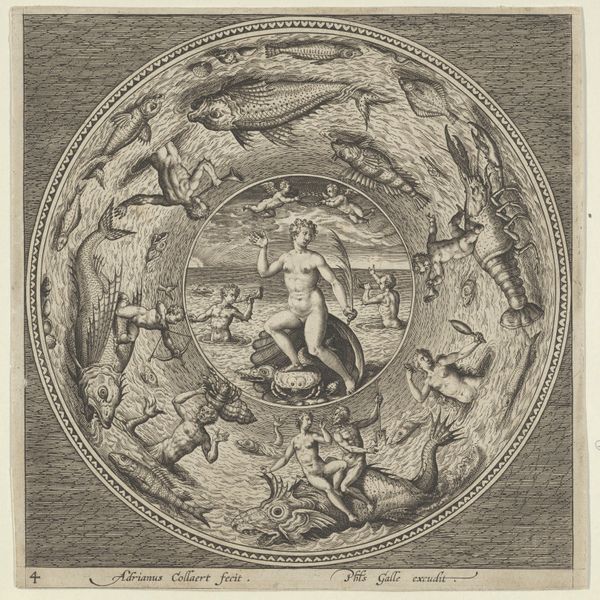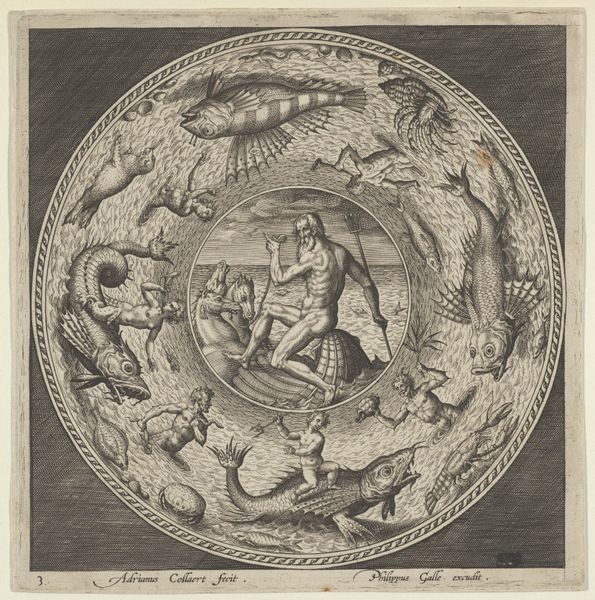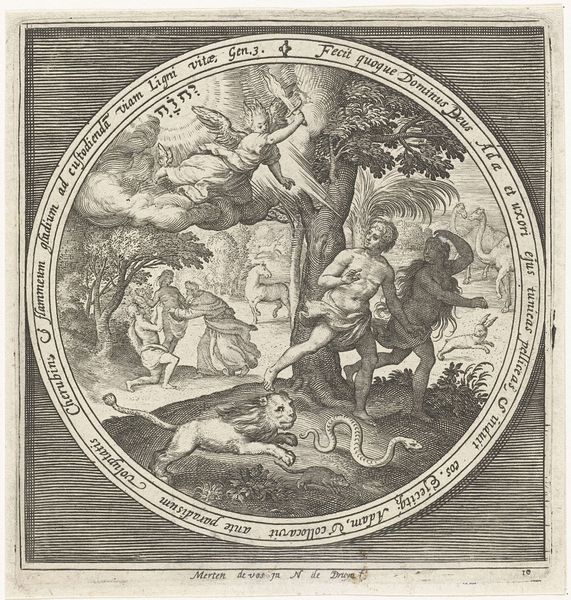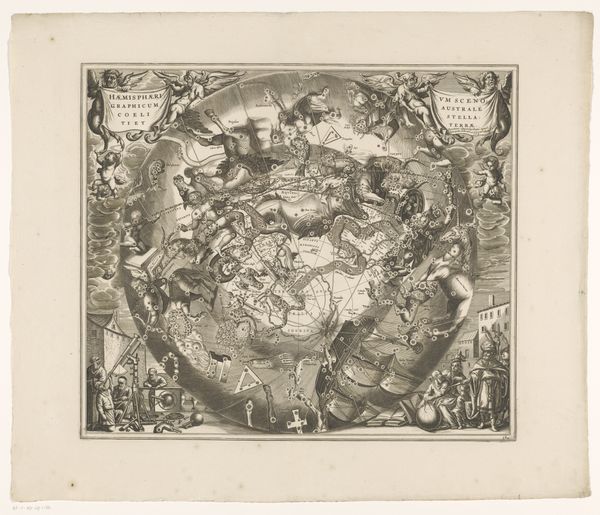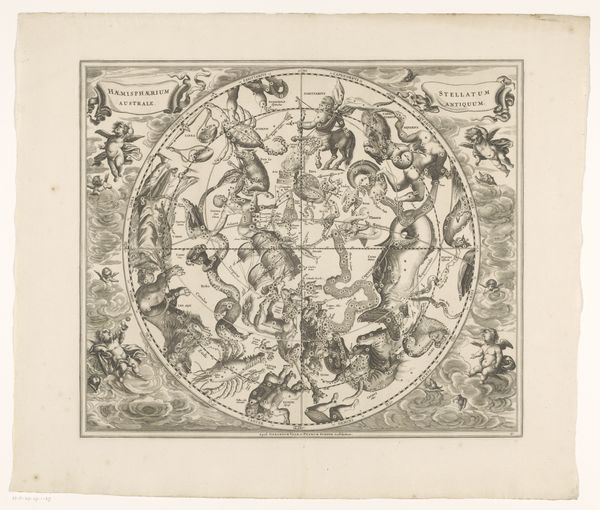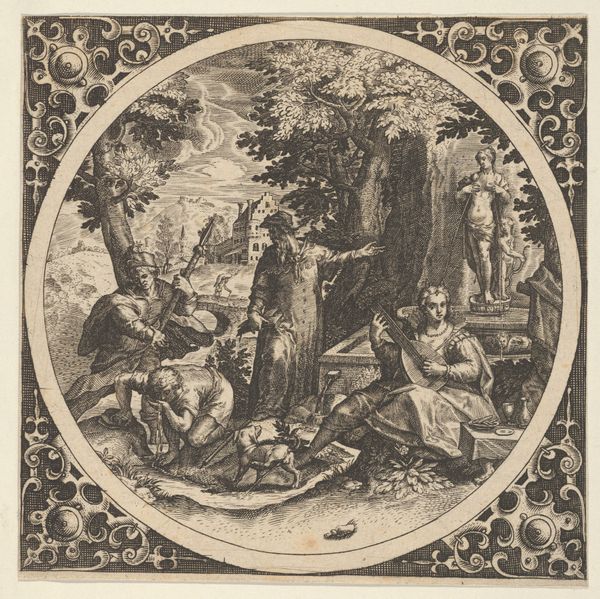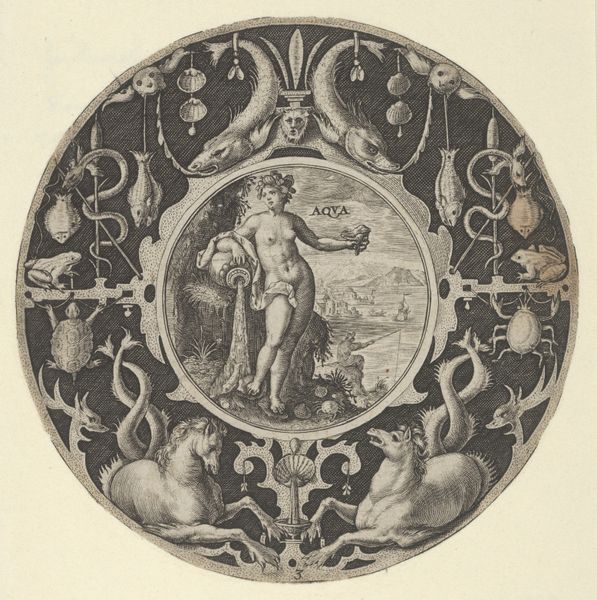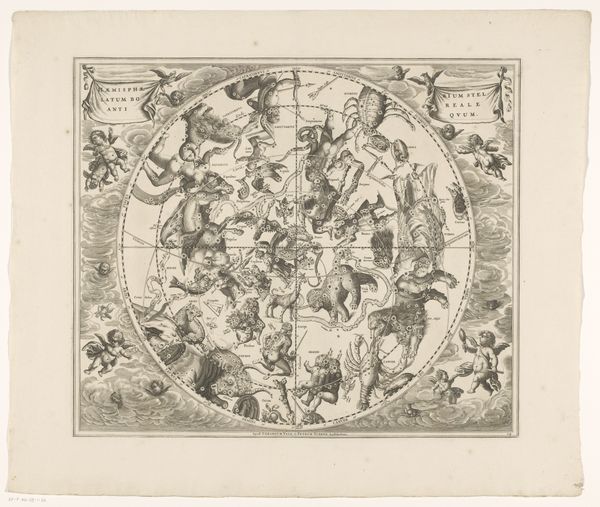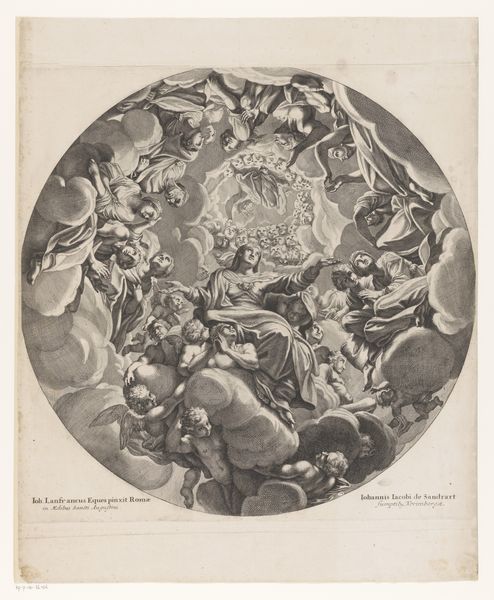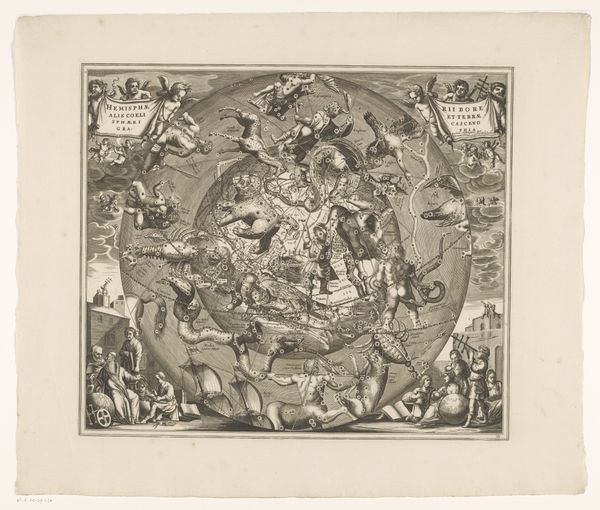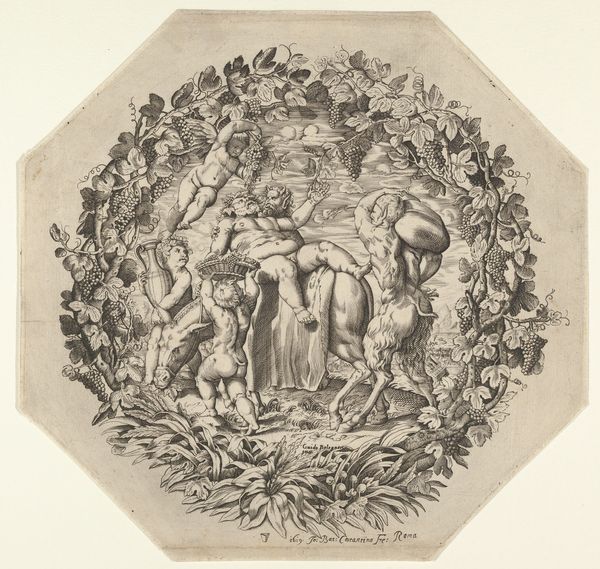
Design for a Plate with Arion Riding a Dolphin in a Medallion Bordered by Sea Monsters 1595 - 1605
0:00
0:00
drawing, print, engraving
#
drawing
#
allegory
#
baroque
# print
#
landscape
#
figuration
#
engraving
Dimensions: Sheet: 6 9/16 × 6 1/2 in. (16.7 × 16.5 cm)
Copyright: Public Domain
Curator: Ah, here's something intriguing. Adriaen Collaert’s "Design for a Plate with Arion Riding a Dolphin in a Medallion Bordered by Sea Monsters," made sometime between 1595 and 1605. Editor: Wow, a mythological mosh pit! I’m immediately struck by the dynamism, all these swirling creatures, kind of baroque but bordering on the grotesque. It makes you seasick just looking at it. Curator: It’s all about controlled chaos, I think. The circular composition centers around Arion, a poet and musician, being rescued by a dolphin. Legend says he was thrown overboard by sailors who wanted his treasure, but the dolphin, charmed by his music, saved him. Editor: Of course, there’s that whole "civilized man taming the wild beast" narrative at play here. Who gets to tell the story, and all that. Plus, let's not forget the context: early modern Europe, awash in colonial exploits. These sea monsters might be a manifestation of European anxieties about the unknown depths, both literal and metaphorical, wouldn’t you say? Curator: Absolutely. The border teems with those fantastical sea creatures—dragons with fish tails, winged sea horses, bizarre human-fish hybrids. It's a visual feast—or perhaps a cautionary tale—of the unpredictable power of nature. Collaert was a master engraver, so the details, rendered in stark black and white, have a striking intensity. It makes you think what the dinnerware should show us. Editor: And what of the symbolism inherent in portraying Arion nearly nude in a manner suggestive of Greco-Roman idealism while also embedding him as a point of serene refuge for those grotesque sea beings who appear marginalized, othered, and frighteningly isolated within the context of this composition? Curator: Well, exactly that contrast. The figures look quite classic but exist in this baroque ocean with wild things, just like the Age of Exploration as European countries venture into foreign landscapes filled with flora and fauna that defy everything people have thought they know. Editor: Hmm, well it all leaves me with more questions than answers, doesn't it? Curator: Isn't that always the point? Sometimes a wild, watery vision helps reveal deeper currents.
Comments
No comments
Be the first to comment and join the conversation on the ultimate creative platform.
